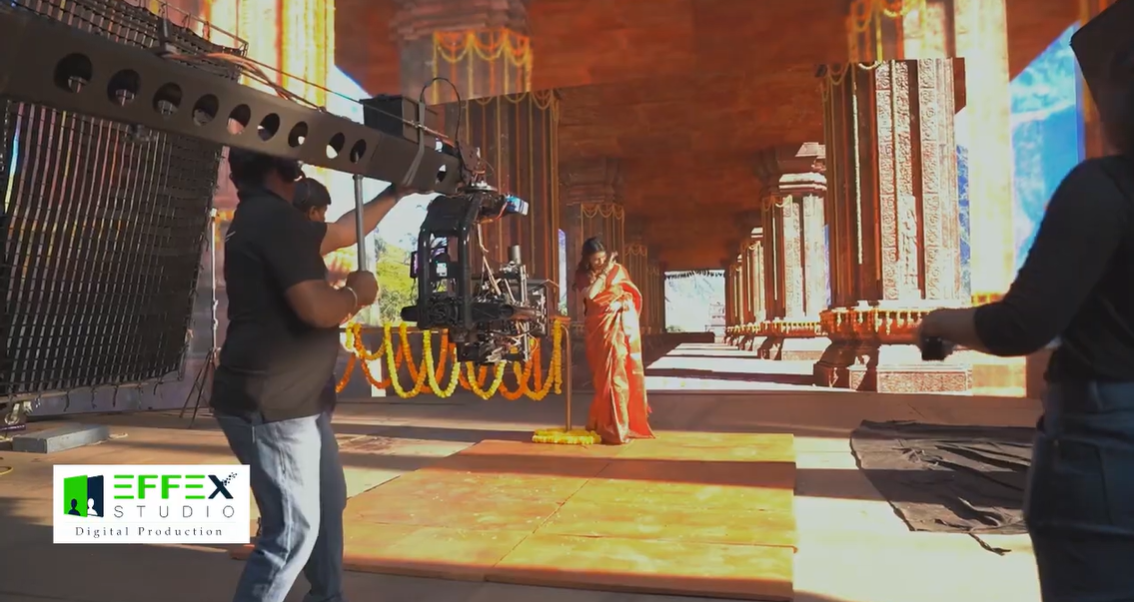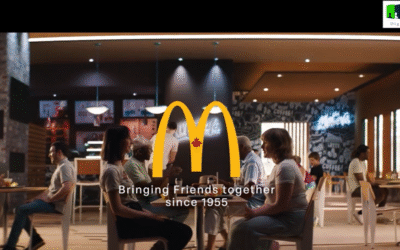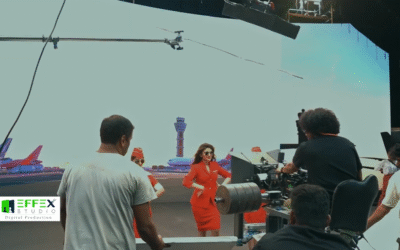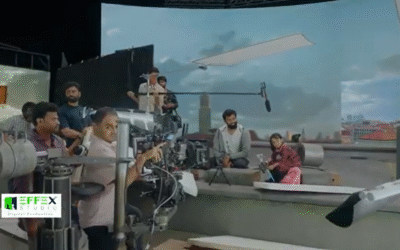Introduction
The textile and fashion advertising industry is rapidly embracing cutting-edge production workflows. As brands demand quicker delivery, sophisticated visual language, and location-independent execution, traditional outdoor shoots are proving inadequate. Enter virtual production advertising—a game-changer that allows fashion-forward campaigns to be executed entirely in studio-controlled environments. This case study showcases how a textile commercial was crafted from start to finish using real-time rendering, LED technology, and immersive digital sets within a virtual production advertising pipeline.
Objective
To develop a fabric-focused advertisement that captured rich textures, fluid motion, and a stylized environment without depending on unpredictable outdoor locations. The creative team aimed to enhance visual storytelling while optimizing time, control, and production efficiency through virtual production advertising techniques.
Challenges
Textile ads require meticulous control over lighting, color accuracy, and fabric movement. Shooting in natural locations brings the risk of inconsistent light, unexpected environmental interference, and extended timelines. Additionally, stylized backgrounds—such as desert vistas, courtyards, or dream-like terrains—often demand expensive set builds or location permits. To bypass these limitations, the team chose a virtual production advertising setup to simulate the full scene within a smart studio space.
Execution Process
1. Pre-Visualization
The commercial’s creative vision was mapped through detailed 3D previsualization. Using virtual camera blocking, lens testing, and environmental lighting mockups, the team ensured smooth transitions, pose accuracy, and fabric interaction with digital wind and light. The previs phase gave every department—from styling to cinematography—a cohesive blueprint, aligning goals early and minimizing guesswork on set.
2. Asset Creation
A photorealistic environment was developed in Unreal Engine, inspired by natural tones and minimalistic design to enhance the visual appeal of the textile product. Every element—from wind simulations to sky gradients—was crafted to complement fabric flow and reflectivity. Special attention was given to material shaders, ensuring the virtual terrain subtly supported the main subject without distraction—an essential aspect of effective virtual production advertising.
3. Technical Integration
The studio was equipped with a semi-encircled LED wall system, serving as both the background and active light source. The primary camera was fitted with real-time tracking sensors, which synced its movements with the digital set. This enabled natural parallax, realistic background shifts, and stable interaction between real and virtual elements—all vital for delivering cinematic quality in virtual production advertising setups.
4. Virtual Scouting
Before the shoot, key crew members—including the director and stylist—entered the digital set using VR headsets. This allowed them to preview the scene in full scale, make changes to lighting angles, color temperature, and backdrop design, and finalize staging decisions—all without physical reassembly. The virtual scout helped eliminate hours of trial and error on production day.
5. In-Camera Capture
During the actual shoot, actors and textiles were filmed directly in front of the LED wall, which displayed the real-time environment behind them. The lighting projected from the wall matched the virtual backdrop, creating organic reflections and shadows on the garments. This real-time compositing approach—central to virtual production advertising—meant the final footage was nearly complete in-camera, significantly reducing editing requirements.
6. Post-Production
Since nearly all visual elements were captured live, the post-production process was limited to minor grading and retouching. There was no need for extensive rotoscoping, chroma keying, or environmental matte work. The team was able to deliver the final commercial faster and with higher visual fidelity—showcasing one of the core efficiencies of virtual production advertising.
Conclusion
This project demonstrates how virtual production advertising is revolutionizing textile and fashion commercials. By leveraging digital assets, LED technology, and real-time workflows, the production team delivered a visually compelling narrative that would have been far more costly and time-consuming using traditional methods. The seamless blend of technical precision and creative flexibility positions virtual production advertising as a go-to solution for modern brand storytelling.
Key Takeaways
- Virtual production advertising provides precise lighting control and scene consistency
- Real-time camera tracking allows accurate parallax and movement sync
- VR scouting minimizes set-up errors and pre-shoot confusion
- In-camera finalization significantly reduces post-production effort
- Enables product-friendly visual effects without outdoor dependencies
- Ideal for creating repeatable, high-end visuals in textile and fashion sectors



